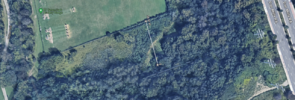ARG1
Senior Member
The problem is its discussions like these that are partly responsible to us having this massive 30 year transit deficit in the first place (not even remotely the sole perpetrator but it is a factor), where we have to pour our heart and soul and have community consultation over every small tree that needs to be shutdown. For many of us transit advocates its even more annoying since in many parts of the US it is very much the main reason for transit projects getting culled, stripped down, and delayed because everyone feels the need to sue transit agencies because it's going to destroy a handful of trees.Are you for real??
I ride through this valley every morning and it was gorgeous with all the trees and grass. Now it's nothing but mud.
No one on here is anti-transit. The Ontario Line is going to be an amazing addition to the city when it starts carrying passengers in the 2030s.
And yeah, you do have to break a few eggs to make an omelette, but you can be pro transit and saddened at the huge loss of green space that has had to happen because of it. The two are not mutually exclusive. If they had to tear down your house to build this line I'd be sad for you that you lost your house even though I'd understand the necessity of transit.
Plus as Northern Light points out the place at which this routes across the valley is very questionable. And the need to cut down such massive areas of trees to have room for staging feels really excessive. These tress once replanted won't be back to the same density for 30 years.
Furthermore it becomes really difficult to take these environmental arguments seriously when you're comparing a small strip of chopped down trees to WORLD WAR 1 BELGIUM, an event that I don't want to post pictures of in this forum.
